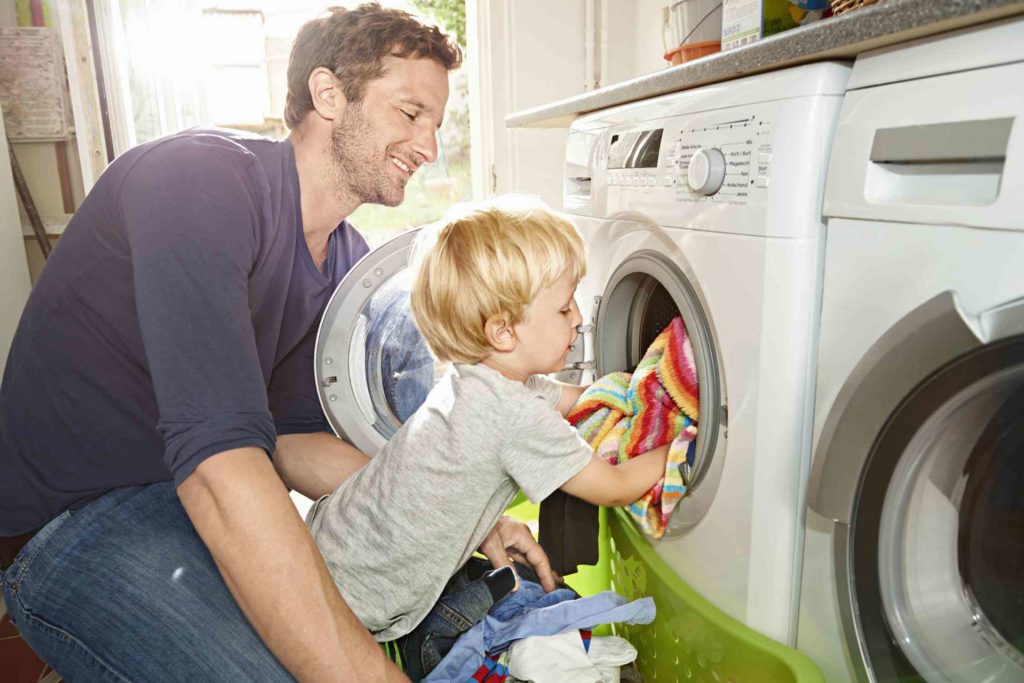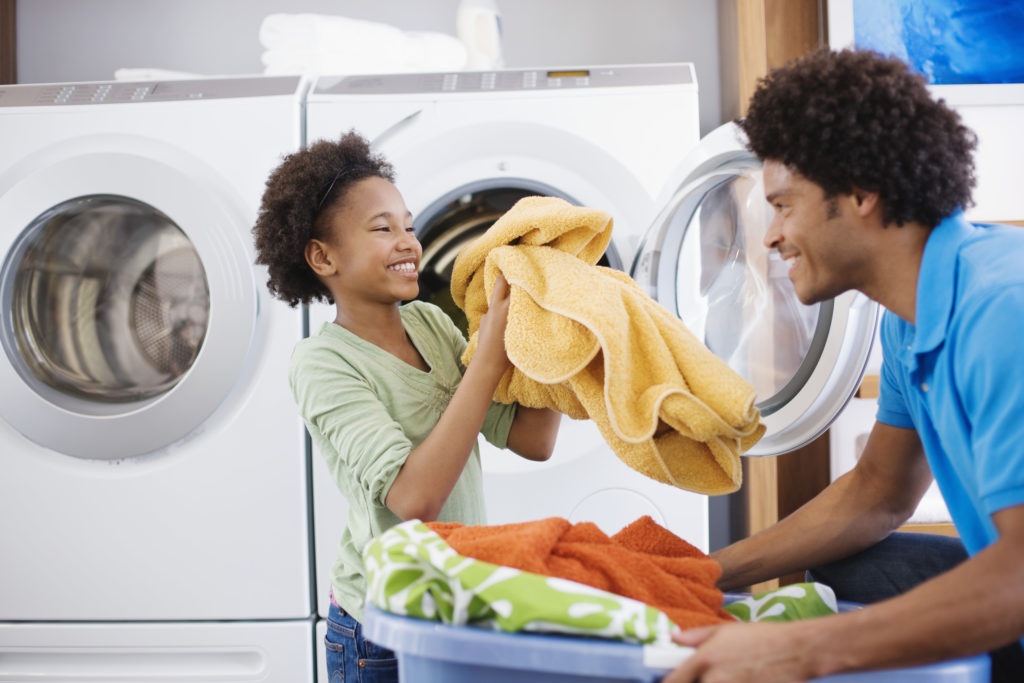Every family is different, but daily chores are universal. Let’s talk about laundry. We all wear clothes and we all have to wash them. The laundry pile NEVER ENDS.
What if we could get this chore done AND teach our children tons of language at the same time? The possibilities are endless!

A few tips to remember:
1. Interaction is key. Before you start layering lots of new language, let your child get used to the fun of “helping” with laundry – pulling the clothes basket, pouring, soap. When the activity is fun, they will want to come back.
2. Teach, teach, teach before you test. Your child will leave quickly if you start asking them to identify the name of every item you show them. Comment about what is happening, and model keywords when you have your child’s attention. After you say something, remember to WAIT to give your child a chance to take a turn in the conversation.
3. Use a variety of word types including: object labels (e.g. soap, washing machine, dryer, basket, clothing labels, action words (e.g. pour, carry, open, sort, fold, wash), and descriptive words (e.g. colours) – Tip: Many descriptive words can be taught as opposite-pairs (dirty/clean, empty/ full, wet/dry, same/different when matching socks!)
How can I apply early language strategies to laundry?
Here are some tried and true strategies that you can use to build your child’s early communication skills:
Join in! Do the laundry TOGETHER!

Let your child take a turn – do or say something and then WAIT to give your child an opportunity to take a turn. When your child says something, looks at you, holds something up, reaches for the soap etc., he or she has taken a in the conversation.
Respond immediately when your child takes a turn. You can:
IMITATE – copy your child’s gesture or word
INTERPRET – model a word or phrase that you think he/she means
EXPAND – if your child uses a word, copy and add a word or two (e.g. if your child says “soap” you could say “Pour the soap”)
How can I target other areas of communication for children who already have a large vocabulary?
Model grammar structures:
Pronouns: This is MY shirt, these are YOUR socks, this is daddy’s shirt – HIS shirt is bigger, here’s Emma’s dress – SHE loves this one!
Plurals: Here are my socks.
Possessive nouns: This is Evan’s sock, This is mommy’s shirt, these pants go in Aidan’s pile.
Is/are: The clothes ARE drying, the washing machine IS full, these socks ARE daddy’s, my shirt IS blue.
Check out more Grandview Kids articles
- “Grandview Kids became my life raft” – International Day for People with Disabilities
- December: Dates of Significance
- From the search for support to finding a village: Celebrating Giving Tuesday
- Scarlett sparkles with hope in every step: Grandview Kids 2025 Holiday Campaign
- Volunteer Spotlight – Heather A.
